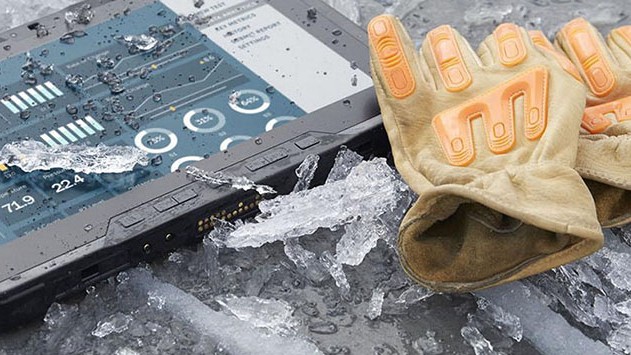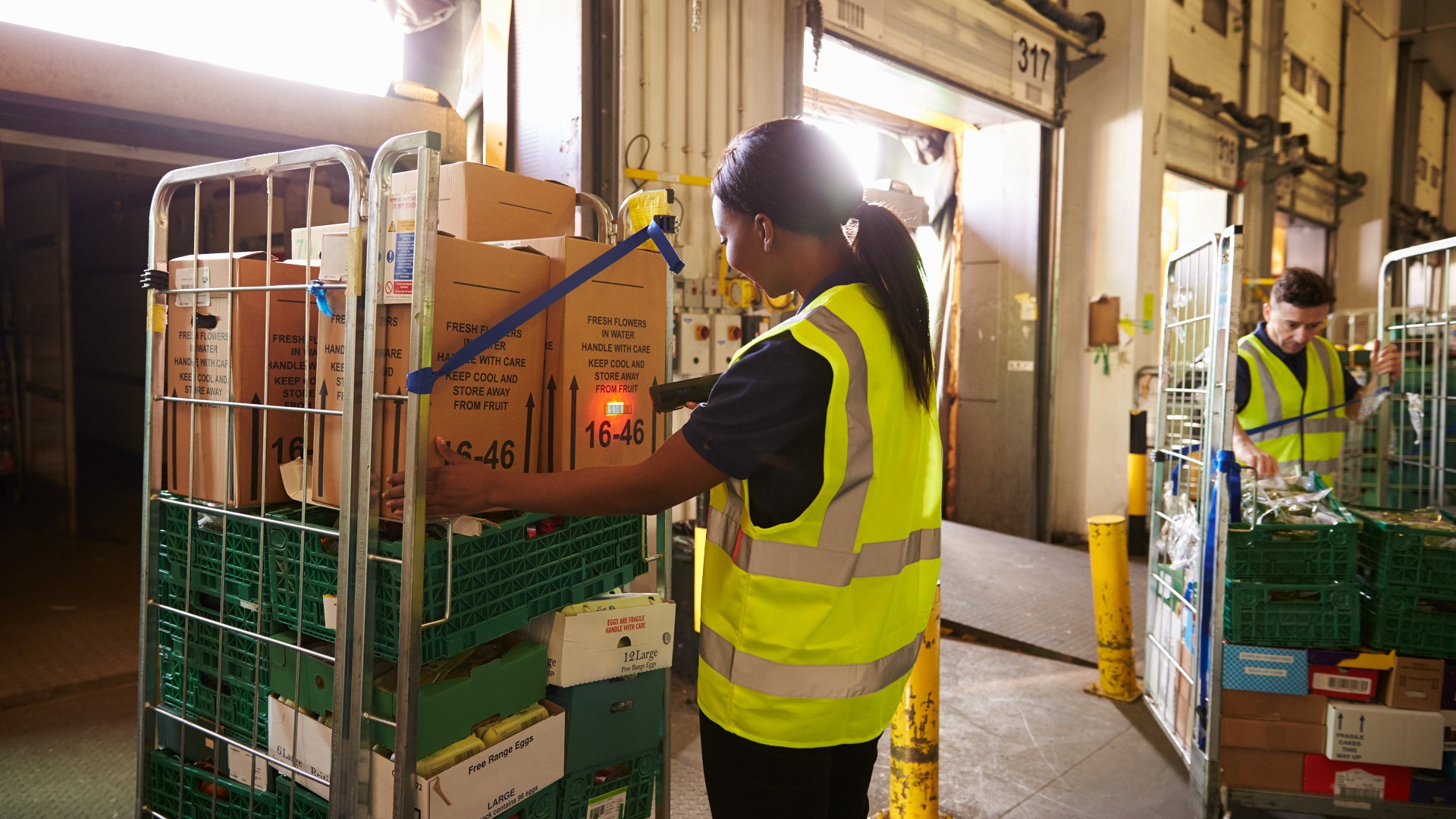Whether you’ve never fully embraced asset tracking, are looking for a new method, or just want to save on paper, it’s time to look into a digital asset tracking system for the most important equipment in your facility.
Asset tracking is different from inventory tracking, though they are commonly confused. Inventory tracking is the tagging and cataloging of the products moving in and out of your warehouse for sale. Asset tracking, on the other hand, is about keeping tabs on the machines, tools, and vehicles that allow your business to keep running.
But how can an industrial grade tablet make all of this possible? And, most importantly, how necessary is asset tracking?
Why Do I Need Asset Tracking?
Article Guide
Asset tracking is, in some ways, more important than inventory tracking — a missed product can be an inconvenience, a cost-of-doing-business bit of shrinkage. A missing propane tank, pallet jack, or welding machine — or the breakdown of a forklift that hasn’t had regular maintenance tracking — can bring operations to a complete standstill.
A system of RFID asset tracking tags, barcodes, and industrial tablets PCs can track equipment from the moment it arrives and gets deployed, to cleaning and maintenance, up to its final retirement and replacement.
Regular asset tracking reduces theft and increases safety — when equipment is proven to be regularly serviced, there’s less chance of the kind of sudden breakdowns that could endanger staff members near (or using) the machines.
Asset tracking also improves hazardous material handling, ensuring that all waste materials, biohazards, radioactive elements, or dangerous fuels and chemicals are always stored in the proper place (and for the correct amount of time between inspections).
RFID Tagged Tracking for Vital Assets
RFID tags are small plastic cases that contain a tiny computer chip and radio antenna. They use radio frequency and a unique, individual bit of programming to store data about the asset: type of equipment, location, maintenance schedule, age, use hours, and more.
Then, a worker with an industrial grade tablet containing a built-in RFID reader can scan assets whenever they use them, are looking to clean or maintain them, or are simply trying to find the right tool for the job at hand.
When to Use RFID Tags
Big equipment like trucks, forklifts, sweepers, mowers, pallet jacks, and the like — especially particularly mobile equipment — are great candidates for RFID tagging. They’re expensive, they’re vital, and they often require regular maintenance, three things RFID tagging is best at.
RFID tags can be used to create a check-in/check-out system for important tools, a system that records when tools were taken from storage. With individual worker IDs, the system could even record who took the tool, how long they used it, and when they brought it back.
Agriculture uses RFID tags to track and label livestock, while research labs use those same tags to keep an eye on lab animals like monkeys and guinea pigs. When a vital component of your operation has four legs and a mind of its own, that’s a smart thing to keep tabs on it.
When Not to Use RFID Tags
RFID tracking isn’t perfect for every piece of equipment, or for every situation. Naturally, radio interference can affect the scanning process. Most background radio won’t be a problem, but if your business involves a lot of EM interference it could present a problem.
RFID tags are also more expensive than barcodes, so it isn’t wise to slap one on every wrench and trash can in the facility. Instead, stick to using RFID tags for vital equipment, and gear with a value that far exceeds the cost to tag it. A lower threshold of around $300-$500 might be a good starting place for RFID tagging.
Another pitfall to watch out for — if RFID-tracked equipment is stored in very close proximity, it may be difficult for the industrial tablet to get a solid, accurate read. If the items are stored close enough, it’s possible to accidentally grab the next item over. For most uses — big machines, vehicles — this doesn’t really come up, but it’s still an important tip to remember.
Barcodes for Asset Tracking
Barcodes were invented over 60 years ago, but are still the most popular form of digital identification for objects in the world. It’s not hard to see why – they’re cheap, they can hold a lot of information, and they’re totally universal.
Barcodes are useful for inventory, but they can also make asset tracking much simpler.
When To Use Barcodes
When it comes to asset tracking, barcodes are perfect for smaller or less expensive items.
Slapping a barcode on all of your frequently-used tools and storing them next to an industrial PC with an integrated barcode scanner is a great way to have employees check the tools in and out. The worker uses the industrial PC to log in, grabs the tool or tools they need, scans with the same computer, and goes to work. This process would then repeat when they went to lunch or left for the day, checking those same tools back in again when they clocked out.
A process like this not only helps to minimize theft, but it also keeps track of use-hours for each individual tool, which can aid in maintenance, cleaning, and replacement schedules.
There could even be a cleaning, oiling, or maintenance area for the tools, and the tool’s barcode is scanned afterward to create a maintenance log.
Consider using barcodes for replacement parts. Spare tires, filters, gaskets, blades, drill bits — barcodes can be slapped on all of these items so the company knows exactly how many replacements they have and when its time to order more. This is doubly important for when replacement parts for a particular machine or piece of equipment are custom, expensive, or take a long time for delivery.
Barcodes can also help eliminate some of the loss typically associated with incidentals like returnable packaging. Racks, reusable pallets, large containers, drums, sleeves, and other forms of returnable packaging don’t always come back, and it can be impossible to figure out where they went without some kind of tracking solution. Barcodes are quick and cheap, so if the item in question does get lost the company isn’t out the price of an RFID tag (or the price of several).
But, the barcode (when scanned as it leaves the facility) can point the company to where the pallet or gas cylinder was sent and subsequently never returned.
When Not to Use Barcodes
We’ve already discussed why RFID tags are better for larger, more expensive equipment. However, that isn’t the sole benefit.
Barcodes require a physical line-of-sight between the barcode and the scanner on the staff member’s industrial tablet (or other barcode scanner). If the item in question is something like a crate, box, or other bit of packaging that is ever flipped on its side or turned around, that could present a problem. A barcode on the top of a crate that’s been stacked three high isn’t helpful. In these cases, an RFID tag would be far superior.
Barcodes can also be easily damaged. Placing a barcode on a wrench and then tossing it into a bucket of other tools could easily scratch the barcode off. A pallet that’s being constantly grabbed by a forklift could lose its barcode, as could any item with a paper barcode that is stored outside during inclement weather.
Barcodes also require good lighting to read, which is not always available in a storage room in the corner of a warehouse.
Do You Know Where Your Assets Are?
Did you know that 55% of small businesses don’t track assets at all? Or, if they do, they’re still using a manual pen-and-paper method? Researchers have also discovered that up to 65% of the asset data that is being tracked is either inaccurate, incomplete, or entirely missing.
They even estimated that 10% to 30% of the assets that do show up on the report are no longer even owned. There are called “ghost assets,” and they can be a massive drain on any company.
Keep your budgets accurate, your replacement parts accounted for, and every piece of vital equipment properly maintained on a regular schedule.
Contact Cybernet today to learn more about the industrial grade tablets and industrial computers that can integrate all of your tracking needs into one tidy package.
How Rugged Industrial Tablets Streamline Logistics
June 28, 2021
Though it often gets overlooked in our day-to-day lives, logistics – or the systems that move goods and materials from place to place – is essentially the economy’s operating system. After all, the…
0 Comments8 Minutes
Why Choose Rugged Tablets over Consumer Tablets
January 12, 2016
As technology continues to play a more integral in the way companies operate, many are now opting to use mobile tablet computers for their business purposes. In fact, According to Quarterly Mobile PC Shipment and…
0 Comments4 Minutes
Industrial Tablets vs Off-the-Shelf in the Field
November 20, 2017
Since 2010, Apple has seen tremendous success after the corporation released it's first iPad tablet, launching a new market and being the trendsetter in a new line of mobile technology products. As recent as 2016,…
0 Comments8 Minutes
You Can't
Learn from a Pop-up
But we can deliver knowledge to your inbox!
We dive deep in the industry looking for new trends, technology, news, and updates. We're happy to share them with you.
Knowledge, News, and Industry Updates Right in Your Inbox





